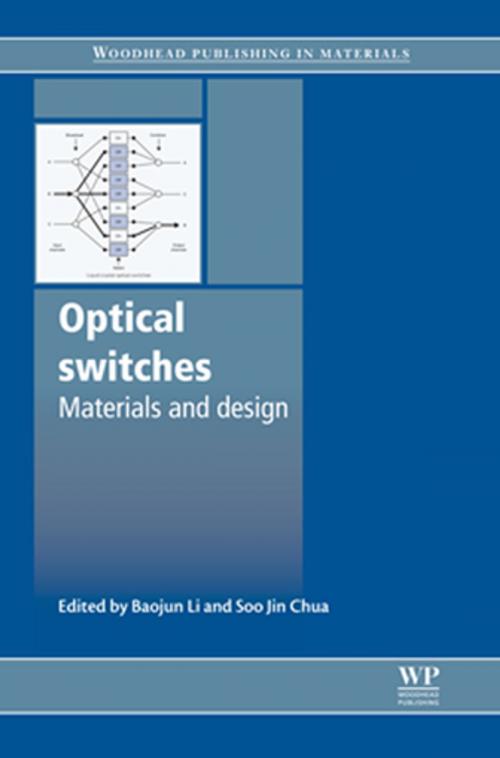| Author: | ISBN: | 9780857090416 | |
| Publisher: | Elsevier Science | Publication: | October 28, 2010 |
| Imprint: | Woodhead Publishing | Language: | English |
| Author: | |
| ISBN: | 9780857090416 |
| Publisher: | Elsevier Science |
| Publication: | October 28, 2010 |
| Imprint: | Woodhead Publishing |
| Language: | English |
Optical communication using optical fibres as the transmission medium is essential to handling the massive growth of both telecom and datacom traffic. To fully realize the potential bandwidth available on these optical fibres, other components of the optical network system have to be developed, ranging from detectors and multiplexers to buffers and switches. This book addresses the different technologies which can be applied to switching optical signals.
An optical switch functions by selectively switching an optical signal delivered through an optical fibre or in an integrated optical circuit to another. Several methods are available and each relies on a different physical mechanism for its operation. The various physical mechanisms used are discussed in the main chapters in the book which cover electro-optical, thermo-optical, micro-electro-mechanical (MEMS)-based and semiconductor optical amplifier (SOA)-based optical switches. The book also covers switching based on optical nonlinear effects, liquid and photonic crystal optical switches as well as fibre, holographic, quantum optical and other types of optical switches. Each chapter discusses the choice of materials, fabrication techniques and key issues in switch design.
With its distinguished editors and international team of contributors, Optical switches: materials and design is a standard reference for the telecommunications industry and those researching this important topic.
- Reviews this commercially significant area of research and addresses the different technologies which can be applied to switching optical signals
- Provides a balanced look at the developments which can be defined as key trends in optical switches
- Major optical switches including electro-optical, thermo optical and magneto-optical switches are discussed and the respective theory and principles of each explored
Optical communication using optical fibres as the transmission medium is essential to handling the massive growth of both telecom and datacom traffic. To fully realize the potential bandwidth available on these optical fibres, other components of the optical network system have to be developed, ranging from detectors and multiplexers to buffers and switches. This book addresses the different technologies which can be applied to switching optical signals.
An optical switch functions by selectively switching an optical signal delivered through an optical fibre or in an integrated optical circuit to another. Several methods are available and each relies on a different physical mechanism for its operation. The various physical mechanisms used are discussed in the main chapters in the book which cover electro-optical, thermo-optical, micro-electro-mechanical (MEMS)-based and semiconductor optical amplifier (SOA)-based optical switches. The book also covers switching based on optical nonlinear effects, liquid and photonic crystal optical switches as well as fibre, holographic, quantum optical and other types of optical switches. Each chapter discusses the choice of materials, fabrication techniques and key issues in switch design.
With its distinguished editors and international team of contributors, Optical switches: materials and design is a standard reference for the telecommunications industry and those researching this important topic.
- Reviews this commercially significant area of research and addresses the different technologies which can be applied to switching optical signals
- Provides a balanced look at the developments which can be defined as key trends in optical switches
- Major optical switches including electro-optical, thermo optical and magneto-optical switches are discussed and the respective theory and principles of each explored















